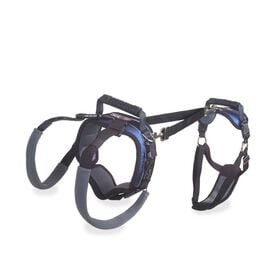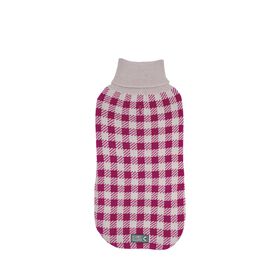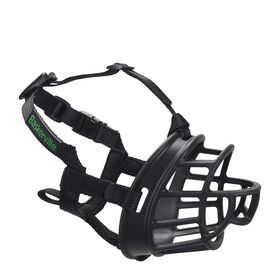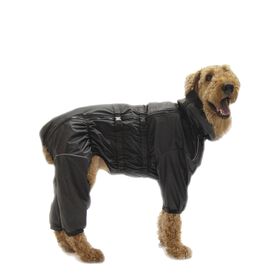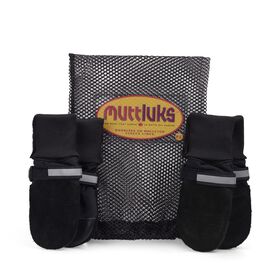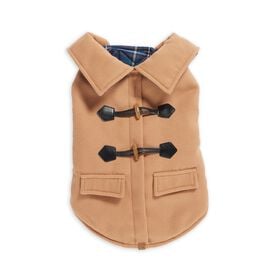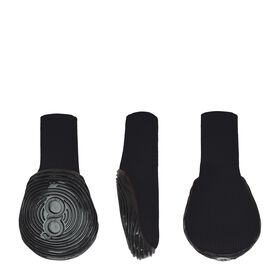Shopping for a harness or coat for your dog? Here’s a practical guide to help you measure your four-legged friend so you can be sure you’ll get the right products that perfectly fit!
5 tips for taking the right measurements
- Use a standard size soft tape measure (also called a sewing tape measure).
- Make sure to record the measurements in both centimetres and inches, so you don’t need to deal with converting sizes later on.
- Have your dog standing when measuring, otherwise you may get inaccurate measurements.
- Make sure the tape is flat when measuring their length or height.
- When you need to wrap the tape around a body part, make sure the tape is snug against their skin, under their hair.
Pro tips: Always measure twice to make sure you haven't made a mistake. This will save you return trips to the store. Also, measure your dog once or twice a year since his weight can fluctuate and you want them to be comfortable in their new clothes or accessories.
Also read: Why should your dog wear boots and a coat in winter?
Choosing the right size
As there are no rules or standards for pet clothing or accessory sizes, it can sometimes be tricky to figure out what to buy. That's why it's important to always refer to the brand's size guide.
With these 12 measurements, you can then choose the right size.
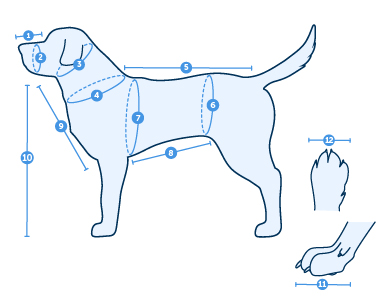
- Snout length: between the base of the eyes and the tip of the snout
- Snout circumference: the thickest part right below the eyes
- Upper neck girth: right under the ears
- Lower neck girth: the lowest part of the neck
- Length - back: between the shoulder blades and the base of the tail
- Waist girth: right behind the rib cage
- Chest girth: the widest part of the chest, between where the back begins and the shoulder blades
- Belly length: between the front and back legs
- Chest length: between the base of the neck and the front legs
- Height at the withers: from the shoulder blades to the base of the front leg
- Front leg length: from the toe to the wrist
- Front paw width: the largest part of the toes
Product-specific measures to be taken
| Products | Measurements required | Tips |
|---|---|---|
| Collar or scarf | 4. Lower neck girth | For extra comfort, add 2 to 5 cm depending on how thick your dog’s hair is. |
| Headcollar | 2. Snout circumference 3. Upper neck girth |
A head collar requires a period of adaptation. With your measurements already taken, you won’t need to have your dog try it on in store, which can be a stressful experience for them. |
| Muzzle | 1. Snout length 2. Snout circumference |
To ensure the muzzle will be comfortable, make sure you are able to slip your pinkie finger between your dog’s snout and the muzzle. |
| Harness | 4. Lower neck girth 7. Chest girth |
If your dog also wears a coat, make sure you can still easily clip the leash to the harness. |
| Traction harness | 4. Lower neck girth 5. Length - back 7. Chest girth 9. Chest length |
Make sure the harness you choose isn’t too tight. That way, it will be adjusted to your dog’s curves and allow for freedom of movement |
| Dog backpack (for hiking) | 4. Lower neck girth 5. Length - back 7. Chest girth 9. Chest length |
Because these are heavier than regular harnesses, they aren’t recommended for everyday walks. |
| Standard coat | 4. Lower neck girth 5. Length - back 7. Chest girth |
Check if you want to put the coat on top or under the harness and then adjust the measurements. |
| Coat with underbelly protection | 4. Lower neck girth 5. Length - back 6. Waist girth 7. Chest girth 8. Belly length |
Make sure there’s a big enough opening under your dog’s belly to allow them to urinate, especially if your dog is male. |
| Coat with legs | 4. Lower neck girth 5. Length - back 6. Waist girth 7. Chest girth 8. Belly length 9. Chest length 10. Height at the withers |
Opt for a size larger than your measurements in order to keep their strides as natural as possible. |
| Coat with hood or neck protection | 3. Upper neck girth 4. Lower neck girth 5. Length - back 7. Chest girth |
You should ideally be able to secure the hood to the back of the coat so as not to hinder your dog’s visibility. |
| Boots | 11. Front leg length 12. Front paw width |
If your dog is between two sizes, pick the bigger size. This will provide your dog with optimal comfort. You should also know that front and back paws can be different sizes, so measure all four paws. Have your dog try on all four boots and let them walk around to see how well they fit. |
Also read: Choosing the right collar, harness and leash for your dog


